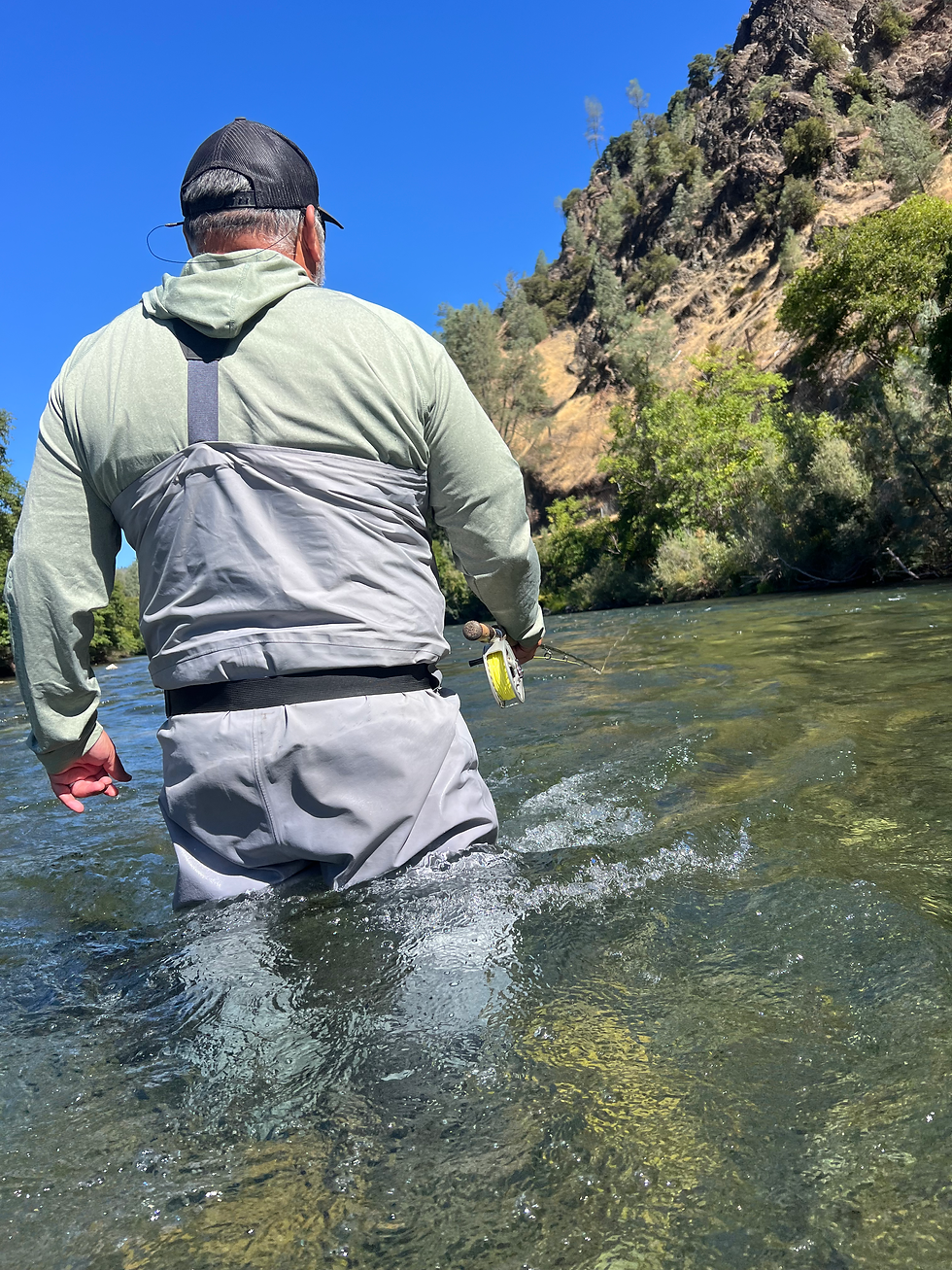Steelhead Fishing with Conventional Tackle: A Classic Pursuit
- Josh James
- Jul 29
- 3 min read
Updated: Aug 3

When most anglers think of steelhead, they imagine long two-handed rods, elegant spey casts, and the meditative rhythm of swinging flies. But before the spey revolution, and still today for many, conventional tackle was — and remains — the go-to method for targeting these elusive fish. Whether you’re new to steelhead or just looking to broaden your approach, conventional tackle offers a versatile and highly effective way to get into fish across a range of river conditions.
Why Conventional Gear?
Steelhead are notoriously unpredictable. Some days they crush a swung spoon in fast water; other days, they barely nudge a pink worm drifted through a deep pool. The beauty of conventional tackle is that it gives you the tools to adapt — to cover water efficiently, change depths quickly, and present a variety of baits and lures with precision.
Rods & Reels: The Setup
Rods:
For most river systems, a 9- to 10-foot medium to medium-heavy rod is ideal. You’ll want something with a sensitive tip for detecting light takes but enough backbone to steer big fish out of fast current or logjams. Float rods, drift rods, or general-purpose spinning rods all have their place depending on the technique you’re using.
Reels:
A quality spinning or baitcasting reel with a smooth drag is critical. Steelhead are known for explosive runs, and your drag system needs to keep up without hesitation. Load it with 10–15 lb monofilament or fluorocarbon, or run a braid mainline with a mono leader if you’re fishing in heavy cover.
⸻
Three Time-Tested Techniques
1. Drift Fishing
The bread-and-butter of steelhead fishing. With this method, you’re casting upstream and letting your bait or rig bounce naturally along the bottom. Common baits include cured roe, yarn balls, beads, or soft plastics. Lead is used to get your offering down, and the key is a natural, drag-free presentation.
2. Float Fishing
Float fishing is arguably the most effective and user-friendly technique, especially on medium to large rivers. A slip float suspends your bait (usually a jig, bead, or egg cluster) just above the bottom and allows for perfect drifts through a run. It’s visual, precise, and deadly effective when fish are holding deep.
3. Hardware (Spoons, Spinners, and Plugs)
When steelhead are aggressive, few things beat the flash and vibration of a well-presented lure. Spoons and spinners — like the tried-and-true Little Cleo or Blue Fox — let you cover lots of water and often provoke reaction strikes in marginal conditions.
But one of the most thrilling ways to fish hardware for steelhead? Pulling plugs.
Whether from a drift boat or sled, slowly backing a plug like a Yakima Bait Mag Lip down a boulder-strewn run is as intense as it gets. These lures wobble and hunt through the current like a wounded baitfish — and when a steelhead decides to grab one, the strike is violent and unmistakable. The rod buries to the cork, the plug rips back, and suddenly you’re locked into battle.
Plug fishing is a deadly method in colder water or when steelhead are holding in mid-river lanes and don’t want to move much for a presentation. Mag Lips, Hot Shots, and Kwikfish all have a place, but Mag Lips in particular shine because of their erratic action and ability to dive deep without a ton of line out. They run true even in heavy current and can stay in the strike zone longer than almost anything else.
⸻
Reading Water: Finding the Fish
Steelhead love transition zones — spots where fast and slow water meet, where depth changes abruptly, or where overhead cover gives them a sense of security. Pay close attention to seams, tailouts, inside bends, and submerged structure. In colder months, fish tend to hold deeper and slower; in warmer conditions, they’ll move into faster water or up into riffles.
⸻
Ethics & Etiquette
Steelhead are a precious resource, and many of our fisheries are struggling. Be mindful of local regulations, especially during spawning seasons. Practice catch and release, handle fish gently, and consider barbless hooks to reduce harm. And don’t crowd — steelheading can be social, but there’s a fine line between sharing water and high-holing.
⸻
Final Thoughts
Steelhead fishing with conventional gear is as effective and rewarding as ever. It’s a dynamic, hands-on way to approach the water — and whether you’re threading a bead through a tailout, swinging a spoon, or watching your plug rod load up like it got hit by a freight train, the connection is real.
Don’t let trends dictate your tackle. Steelhead don’t care how you present — only how well. Master the fundamentals, respect the fish, and fish hard.
Tight lines.





Comments